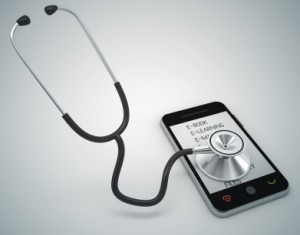Mobile Apps are becoming a major delivery vehicle for health services of all kinds… Just take a look at mHealth!

medical mobile health apps
mHealth (also written as m-health or mobile health) is a term used for the practice of medicine and public health, supported by mobile devices. The term is most commonly used in reference to using mobile communication devices, such as mobile phones, tablet computers and PDAs, for health services and information, but also to affect emotional states. The mHealth field has emerged as a sub-segment of eHealth, the use of information and communication technology (ICT), such as computers, mobile phones, communications satellite, patient monitors, etc., for health services and information. mHealth applications include the use of mobile devices in collecting community and clinical health data, delivery of healthcare information to practitioners, researchers, and patients, real-time monitoring of patient vital signs, and direct provision of care (via mobile telemedicine).
A mobile phone is the perfect place to deliver an app that helps you monitor what you eat, how you exercise, when you take medication or even keep tabs on your heart-rate. The benefit of instant availability from your pocket or handbag is clear. You can look up the calories in that delicious chocolate cake the restaurant is trying to tempt you with. You get instant gratification when you complete the training regimen for the day set by your cyber trainer. There is a huge and growing range of lifestyle apps on the market, designed to make us look, feel, and live better.
According to the analyst firm Berg Insight, around 2.8 million patients worldwide were using a home monitoring service based on equipment with integrated connectivity at the end of 2012. The figure does not include patients that use monitoring devices connected to a PC or mobile phone. It only includes systems that rely on monitors with integrated connectivity or systems that use monitoring hubs with integrated cellular or fixed-line modems. Berg Insight forecasts that the number of home monitoring systems with integrated communication capabilities will grow at a compound annual growth rate (CAGR) of 26.9 percent between 2011 and 2017 reaching 9.4 million connections globally by the end of the forecast period.
Check Health at the Google market.
Check Health at the Apple market [via Appexplorer since Apple does not support app searches via web browsers]
